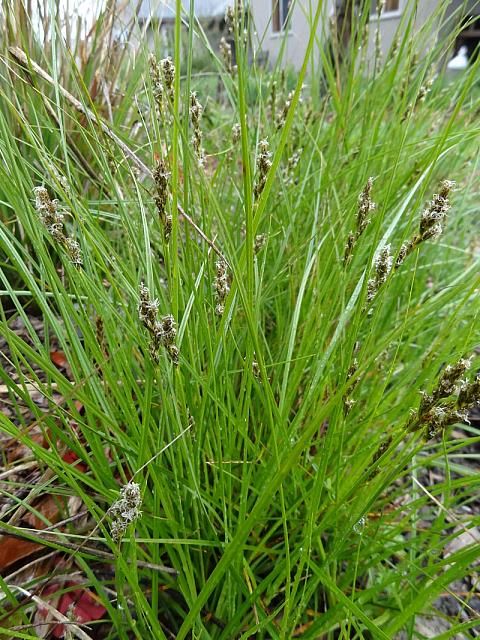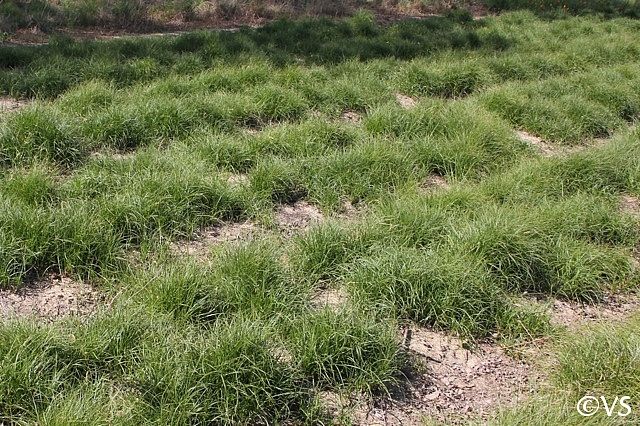Carex pansa: The Pacific Dune Sedge

Carex pansa, commonly known as Pacific dune sedge, is a perennial grass-like plant that plays a vital role in coastal ecosystems along the Pacific coast of North America.
With its ability to stabilize sand dunes, provide habitat for wildlife, and enhance the aesthetic appeal of coastal landscapes, holds both ecological and cultural significance.
In this comprehensive article, we will delve into the various aspects of Carex pansa, from its botanical description to its conservation status and care requirements.
Botanical Description
Is a member of the sedge family (Cyperaceae) and is characterized by its dense tufts of narrow, grass-like leaves and inconspicuous flowers.
The plant typically grows in clumps or mats, with individual stems reaching heights of 6 to 12 inches (15 to 30 cm).
The leaves are dark green and can vary in length from a few inches to over a foot long. In late spring to early summer, Carex pansa may produce small brown or greenish flowers on stalks that rise above the foliage.
These flowers give way to small seeds contained within capsules, which are dispersed by wind or water.
Habitat and Distribution
Is native to the coastal regions of California and Oregon, where it is found in a variety of habitats, including sand dunes, coastal prairies, and salt marshes.
It thrives in sandy, well-drained soils and is tolerant of salt spray and occasional flooding.
Carex pansa plays a crucial role in stabilizing sand dunes along the coast, where its extensive root system helps to bind soil and prevent erosion.
It is also an important component of coastal prairie and salt marsh ecosystems, providing habitat and forage for a variety of wildlife species.
Life Cycle and Phenology
As a perennial plant, Carex pansa exhibits a long life cycle with gradual growth and reproduction.
It typically begins growing in late winter to early spring, with new shoots emerging from the base of the plant.
Carex pansa may also spread vegetatively, with new shoots arising from underground rhizomes or aboveground stolons.
Ecological and Cultural Importance
Carex pansa plays a vital ecological role in coastal ecosystems, where it helps to stabilize sand dunes, control erosion, and provide habitat for wildlife.
The dense foliage of Carex pansa provides cover and nesting sites for birds and small mammals.
While the plant's seeds and foliage are a food source for a variety of insects and grazing animals.
In addition to its ecological importance, holds cultural significance for indigenous peoples of the Pacific coast, who have traditionally used the plant for basket weaving, thatching, and other utilitarian purposes.
Conservation and Threats
Urbanization, agriculture, and recreational activities can all impact the habitat of Carex pansa, leading to declines in population size and genetic diversity.
Invasive plants, such as European beachgrass (Ammophila arenaria), can also outcompete Carex pansa and disrupt coastal ecosystems.
Conservation efforts focused on habitat restoration, invasive species control, and land preservation are essential for ensuring the long-term survival of Carex pansa and other coastal species.

Caring for Carex pansa
Sunlight
Plant Carex pansa in a location that receives full sunlight to partial shade.
While it can tolerate some shade, it will produce the most vigorous growth and densest foliage in full sun.
Soil
This plant prefers sandy, well-drained soils with a neutral to slightly acidic pH.
Amend heavy clay or compacted soil with organic matter such as compost to improve drainage and fertility.
Watering
Once established, Carex pansa is drought-tolerant and requires minimal supplemental watering.
Water deeply but infrequently, allowing the soil to dry out slightly between waterings. Avoid overwatering, as this can lead to root rot and other issues.
Mulching
Apply a layer of organic mulch, such as shredded bark or wood chips, around the base of the plant to help retain soil moisture and suppress weed growth.
Keep the mulch pulled back several inches from the stems to prevent rot.
Pruning
Minimal pruning is required for Carex pansa.
Remove any dead, diseased, or damaged foliage as needed to maintain the plant's appearance and health.
Fertilization
Generally does not require fertilization if grown in healthy soil.
However, if necessary, apply a balanced, all-purpose fertilizer sparingly in spring, following the manufacturer's recommendations.
By following these care guidelines, you can cultivate healthy and vibrant Carex pansa plants in your garden or landscape, creating a beautiful and resilient coastal habitat that enhances the natural beauty of the Pacific coast.
Whether used for erosion control, wildlife habitat restoration, or simply as a decorative accent in the garden, is sure to impress with its adaptability and ecological value.
Leave a Reply
You must be logged in to post a comment.